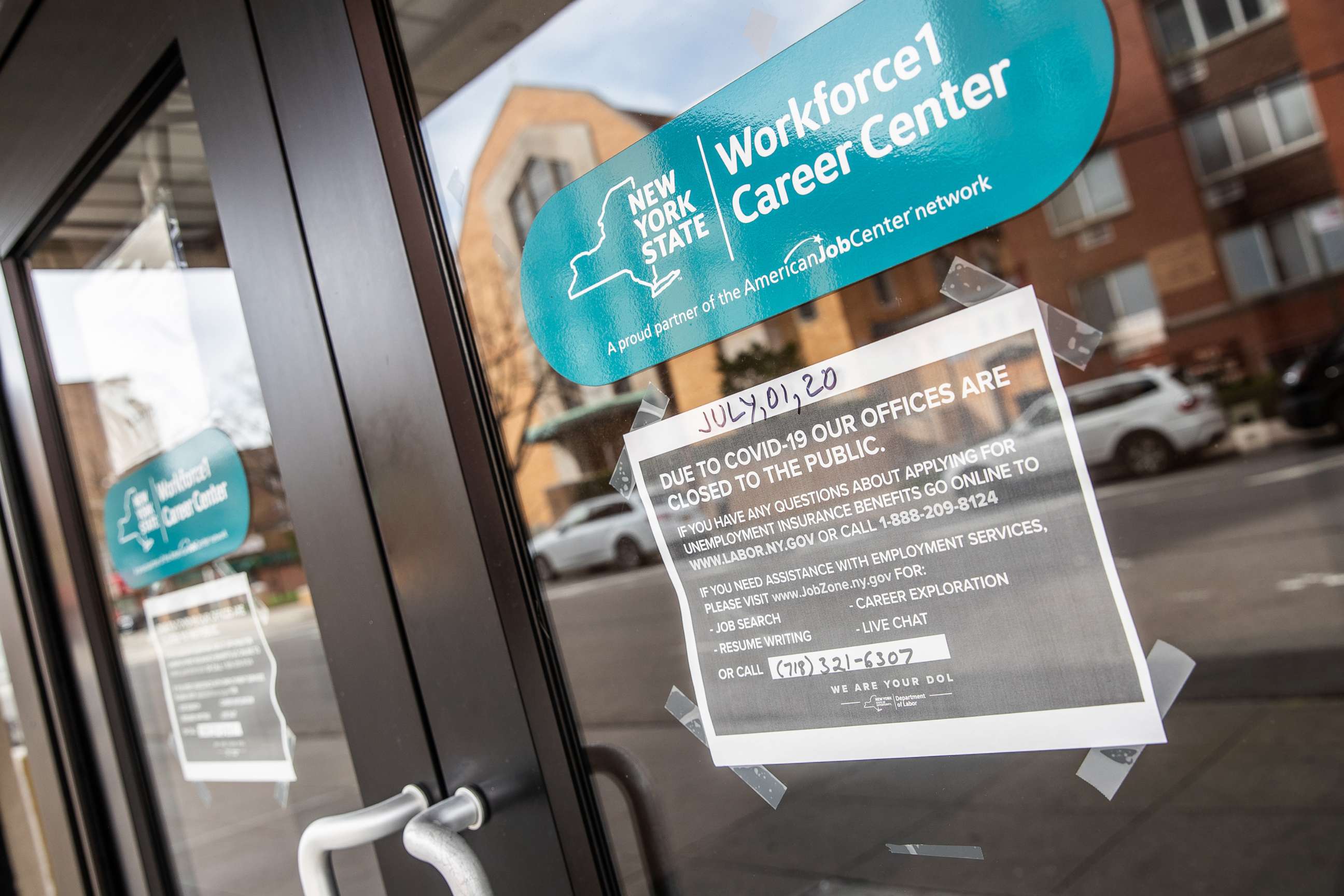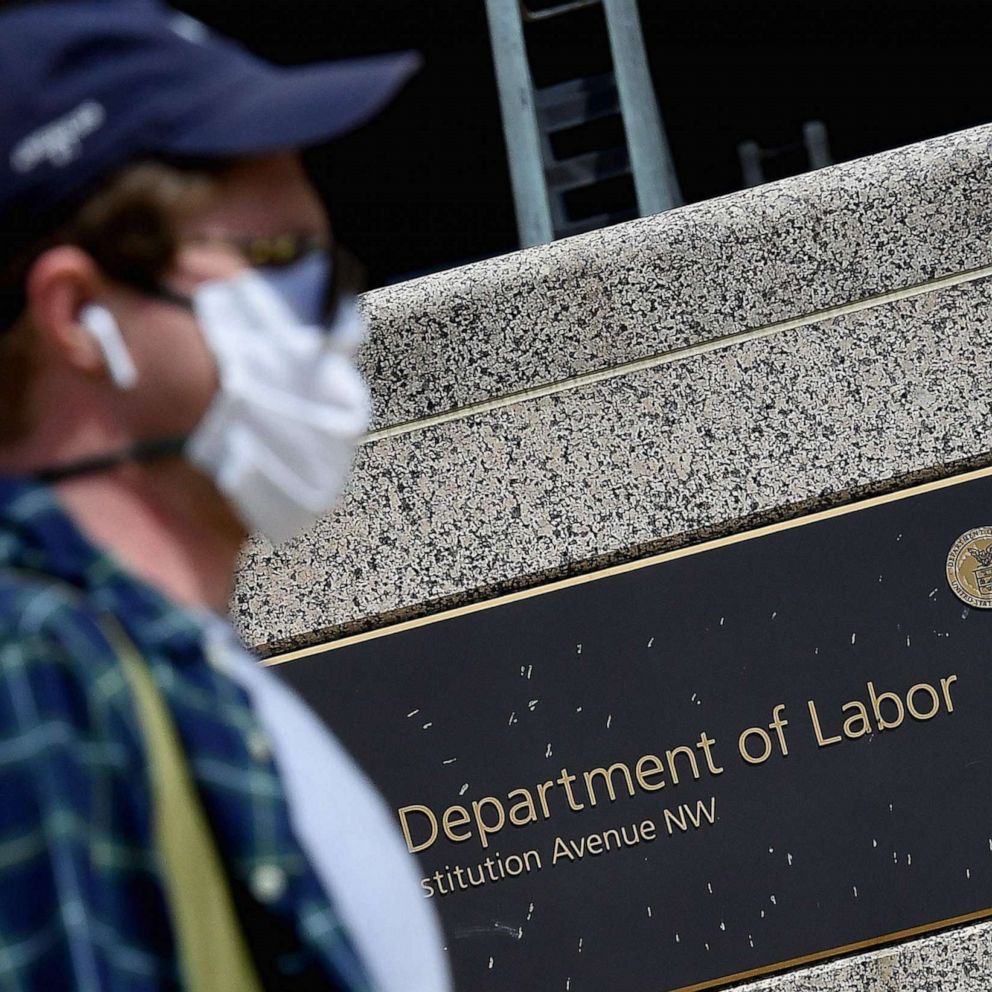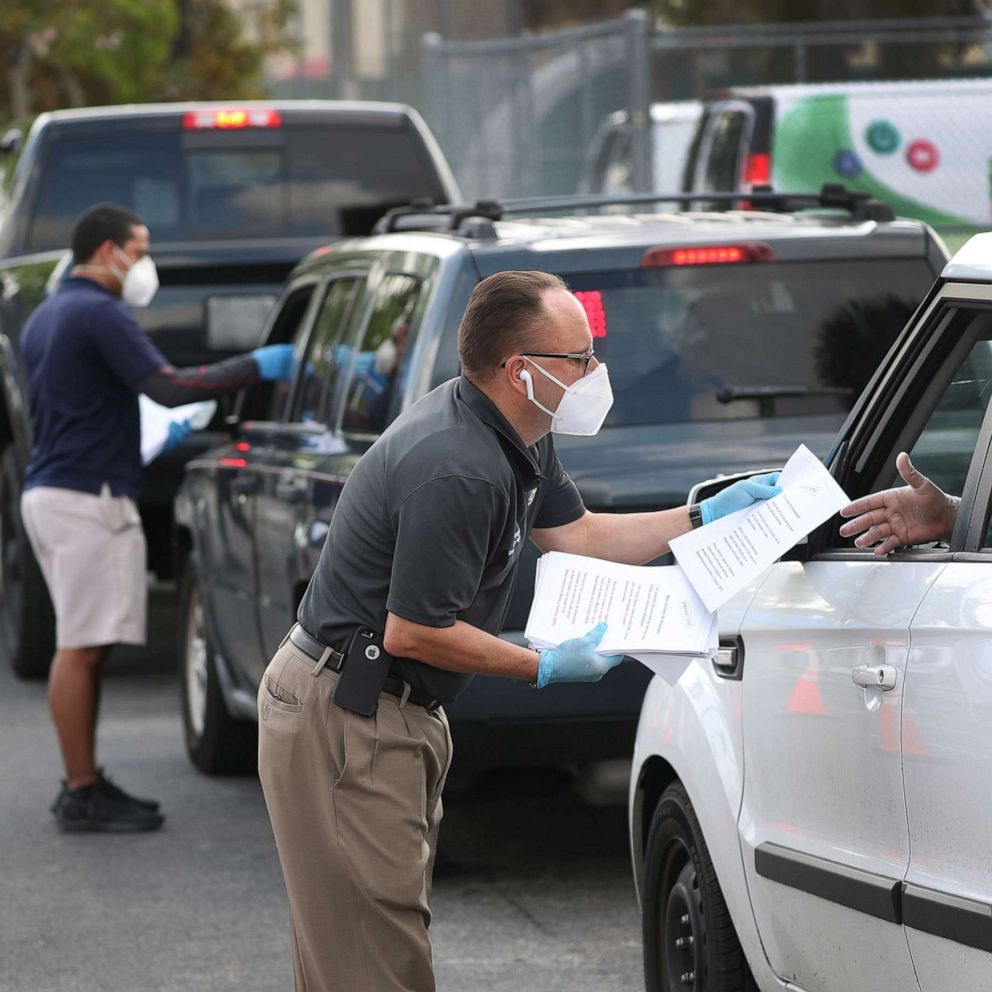States are running out of unemployment money, but claimants shouldn’t worry
As unemployment claims rise, states look to the federal government for help.
State unemployment trusts appear to be either at or nearing depletion this week as nine states requested to borrow a collective $38 billion from the Federal Unemployment Account in the coming months to help mitigate economic fallout from the novel coronavirus pandemic.
During the Great Recession, states borrowed $40.2 billion from the FUA in total. The nine states that had requested money as of Monday -- New York, California, Connecticut, Hawaii, Illinois, West Virginia, Texas, Massachusetts and Ohio -- could collectively borrow just under that amount by the end of July. The states have already been approved to collect $14.45 billion for the month of May.
With over 30 million unemployment applications submitted as of last week, some states have already spent more in unemployment benefits in these two months than they had for all of 2019. Each state will likely soon find its unemployment trust diminished, according to the Tax Foundation, a Washington, D.C.-based think tank.
Tune into ABC at 1 p.m. ET and ABC News Live at 4 p.m. ET every weekday for special coverage of the novel coronavirus with the full ABC News team, including the latest news, context and analysis.
"Based on the current health crisis, most states are likely to exhaust their unemployment compensation trust funds and borrow from the federal government," said Tax Foundation's Director of State Tax Policy Jared Walczak.
The FUA contains $78 billion dollars. If these nine states alone collectively borrow $38 billion by July, it would leave the FUA at only a little more than half full.
States will use the money to pay regular unemployment benefits, while the extra $600 weekly payments for workers laid off during the pandemic are funded separately via federal emergency funding signed into law in late March.
It took a little over a year after the start of the Great Recession for states to dip into the FUA, whereas these nine states could find themselves borrowing from the account just two months after the start of the pandemic.
Both state and federal unemployment funds will likely run dry, according to the Tax Foundation.
"The federal government will almost certainly need to replenish its own fund because it does not currently have sufficient reserves to pay out all of these claims," Walczak told ABC News.

There is no guarantee that each state will use all the federal money it requests from the FUA, however, the money does seem to be moving fast.
California has already tapped into $1.4 billion of the $4 billion it was allotted from the FUA for the month of May, according to the U.S. Department of Treasury.
Claimants will continue to receive unemployment benefits
Those currently receiving unemployment benefits, along with those who apply in the foreseeable future, will continue to receive a check -- regardless of whether the FUA runs dry, according to Walczak.
"This is worrisome for what it means for the federal government finances and the continued deficit spending that we will see," said Walczak. "It should not be worrisome for a claimant."
"The federal government hitting zero is different than states hitting zero in that the federal government has the capacity to keep the dollars flowing," added Walczak.
The U.S. Department of Treasury will automatically move to replenish FUA funds when the account is depleted, according to Andrew Stettner, senior fellow at the Century Foundation.
"Unless Congress says otherwise -- which they have done in the past -- the FUA account would borrow from the Treasury," said Stettner.
What are consequences for borrowing from the FUA?
While the federal government continues to replenish state unemployment funds when necessary, states will eventually have to begin repaying the federal money borrowed during the outbreak.
"The federal government has the ability to deficit spend -- they will do so," said Walczak. "They will continue to provide funding to cover these unemployment benefit claims."
However, deficit spending comes with its own set of costs.
"To some degree, this is, in fact, the federal government printing money to cover the crisis and there's probably no choice right now," said Walczak. "And there are potentially consequences down the line."

According to Stettner, states will begin paying back federal loans accepted during the coronavirus in January 2022, leaving him worried for what this will mean for future unemployment applicants.
"What they do in most cases is they pass a bill that increases taxes and cuts payments," Stettner said. "The people that bear the brunt of those benefit cuts are going to get laid off in January 2022."
Stettner said future claimants could see less money in weekly benefit checks and they may even get fewer weeks of benefits than previous recipients.
"They've done nothing wrong, they just got laid off at the wrong time," Stettner said regarding future claimants. "They're not the cause of the loans, but they're the ones that bear the burden of paying it off."
Why these states first?
Each state has its own respective unemployment trust containing money used to pay out benefits to residents of that state, but these states may have been particularly ill-equipped to deal with unemployment during a recession.
"This list includes a lot of the big states that were not well-prepared for any recession so that compounded the problem," said Stettner.
"States are supposed to have one year of peak recession level funding saved in their account, and 31 states met that goal in 2019," Stettner told ABC News. "The problem is the states left included the big ones: California, New York, Ohio, Texas, Massachusetts, Illinois."
Here's how the totals break down for each state requesting money so far:
California requests $8 billion in federal advances for unemployment
California has requested to borrow $8 billion from the FUA through June and was already approved to borrow $4 billion for the month of May, according to a U.S. Department of Labor spokesperson.
Illinois approved to access $12.6 billion in federal advances through July
Illinois, which has requested the most of any state so far, was approved to access $12.6 billion through July, confirmed an Illinois Department of Employment Security spokesperson.
Since January, Illinois has paid out $2 billion in unemployment benefits -- surpassing the $1.5 billion in unemployment benefits the state paid in all of 2019.
New York requests $4.4 billion in federal advances for unemployment
In 2019, New York state paid out $2.14 billion in unemployment benefits. From March to the beginning of May 2020, New York has already paid out $4.6 billion in unemployment benefits -- more than doubling how much it spent in 2019 in less than two months.
New York has requested an additional $4.4 billion from the FUA to use through July.
Texas requests $6.4 billion in federal advances for unemployment
Texas, already granted access to $1.8 billion from the FUA for May, has requested to borrow a total of $6.4 billion in the coming months.
Texas likely won't use these federal funds until the last week of May or early June depending on claims activity, according to a Texas Workforce Commission spokesperson.
Massachusetts requests $1.2 billion in federal advances
Massachusetts was approved to access $900 million from the FUA for the month of May, according to the U.S. Department of Treasury. The state's labor department has requested an additional $300 million for June, according to the U.S. Department of Labor.
Since March 15, the Massachusetts Department of Unemployment Assistance has paid more than $2.3 billion in benefits to over 700,000 claims, according to a department spokesperson.

Ohio requests $2.7 billion in federal advances for unemployment
Ohio was approved to access $700 million from the FUA for the month of May, according to the U.S. Department of Treasury. The state's labor department has requested an additional $2 billion to cover June and July, according to the U.S. Department of Labor.
Hawaii has requested $1.36 billion in federal advances for unemployment through June.
Connecticut has requested $965 million in federal advances for unemployment through June.
West Virginia has requested $375 million in federal advances for unemployment through July.
Which states are next?
Over a week ago, the Tax Foundation estimated that eight of the nine states above -- excluding Hawaii -- were nearing the end of their unemployment trusts.
Kentucky and Minnesota are estimated to have less than a month worth of funding based on those who have already filed for or are receiving unemployment benefits, according to Walczak.
Walczak added that these two states, along with others who may have already applied to receive FUA funds, but the U.S. Department of Treasury has yet to disclose this information. The department did not respond to ABC News' request for comment.
What to know about coronavirus:
- How it started and how to protect yourself: Coronavirus explained
- What to do if you have symptoms: Coronavirus symptoms
- Tracking the spread in the U.S. and worldwide: Coronavirus map







